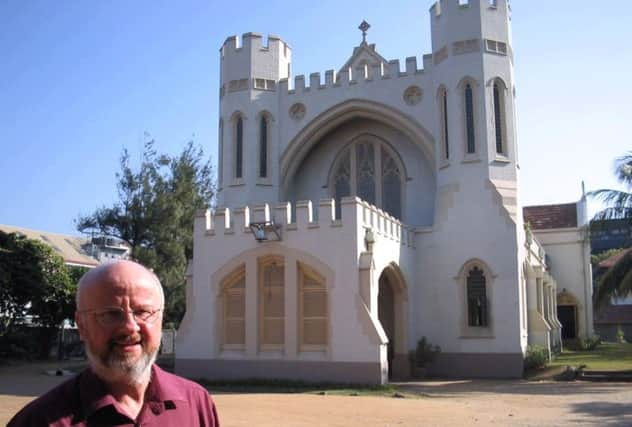Kirk minister recalls tsunami horror 10 years on


The Rev John Purves had been minister of St Andrew’s Scots Kirk in Colombo, the capital of Sri Lanka, for just over a year when the massive tidal wave hit on the morning of Boxing Day 2004.
Speaking on the tenth anniversary of the natural disaster that hit islands across the Indian Ocean, killing 250,000 people in a single day, the 66-year-old minister, who is now retired and living in Largs, Ayrshire, described how he and his wife, Patricia, stumbled across the immediate after-effects.
Advertisement
Hide AdAdvertisement
Hide AdThey had driven six hours to a coastal resort on their first holiday since taking up the charge a year previously, only to find it no longer existed.
He said: “We reached our hotel about 6pm in the evening, we stopped at the gatehouse to check in and the man there said there was no hotel. We asked what did he mean, and he said ‘there’s been a big wave, but if you want to go and see you can drive down’.
“So we drove down, and soon became aware of the total chaos. It was as if somebody with a big wooden spoon had started stirring things around because nothing was in its normal place. There were boats in the roadway, cars on the housetops, fishing boats in the trees, beds, mattresses, sofas on the tennis courts, and everything was coated in a muddy slime. ”
CONNECT WITH THE SCOTSMAN
• Subscribe to our daily newsletter (requires registration) and get the latest news, sport and business headlines delivered to your inbox every morning
The resort had also suffered fatalities, with eight people who were in the hotel killed.
With the area entirely uninhabitable, the couple were forced to retrace their route back to Colombo, which was unaffected by the tidal wave.
They stopped at a hotel, learned of the full scale of the disaster from TV, and phoned children James and Ellen, who were living in Scotland at the time, to tell them they were safe. “They knew we were going to the beach that day but because of the time difference they were uncertain about when we were getting there,” Mr Purves said.
In the days after the disaster, St Andrew’s became a hub for the relief effort on the island, both as a makeshift warehouse for vital supplies and as a communication centre. At one point, the congregation had responsibility for $500,000 in donations to an emergency fund.
Advertisement
Hide AdAdvertisement
Hide AdThey focused efforts on three particularly hard-hit coastal communities, but the logistics of helping so many people who had been effectively cut-off by the tsunami were complicated.
“One of our contacts was with a shanty town community 15km down the coast from us, where the people built their shacks on the beach, and they had been swamped,” Mr Purves said.
“They were accommodated in a nearby community centre, and there were nearly 2,000 people there in need of basic bed mat, sheet, pillow, toothbrush, toothpaste, soap, towel. So we released funds and went out to shops in the area to buy enough of these for 2,000 people – you don’t often go into a shop and ask for 2,000 towels, but Asian traders are amazing people, and you can go in, ask for 2,000 of something, they won’t bat an eyelid, they’ll just say ‘come back in half an hour, I’ll have them for you’.”
According to Mr Purves, for the proceeding four months, the congregation spent “every spare waking hour” organising the relief programme, before moving on to help the process of rebuilding people’s lives and communities, supplying fishing boats and nets, sewing machines and tools, even restocking shops.
Reflecting on what the church achieved in the intervening decade, Mr Purves said: “We probably built 60 houses, repaired another 60, built schools, built churches, put in toilers, sank water wells. I look back now and wonder how we ever managed to do it.”
He adds: “It’s a different Sri Lanka that we left than when we arrived in 2003. A lot of foreign money is coming in because the world can see it’s ready for growth: new luxury hotels were being built in the centre of Colombo, luxury resorts on the east coast where there had been none before.”
SCOTSMAN TABLET AND IPHONE APPS